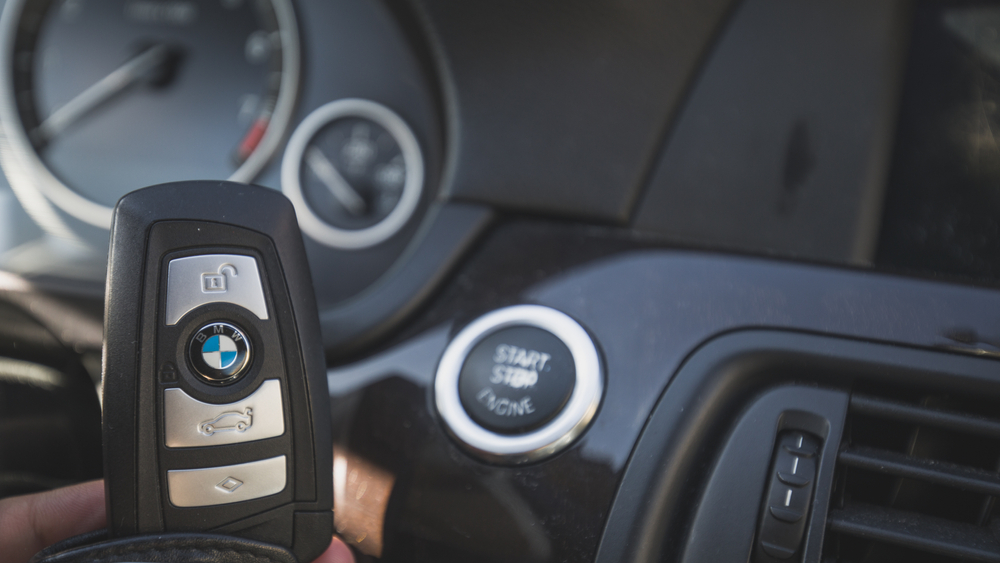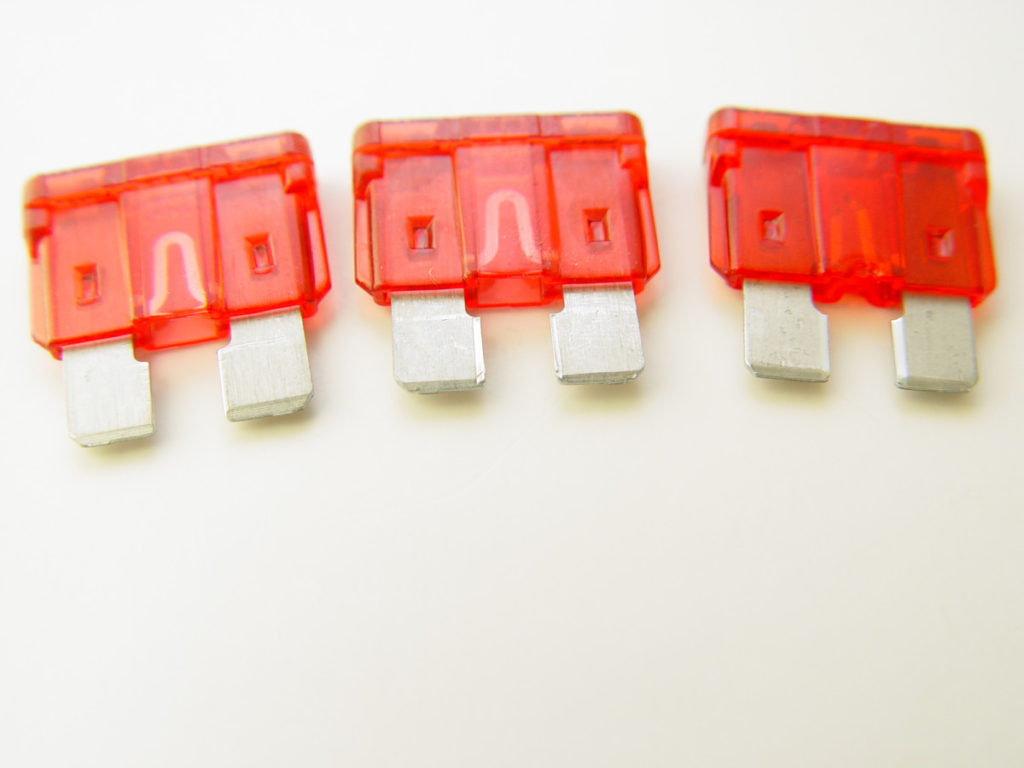From the early 2000s, BMW has improved the quality of its vehicles. The old humorous memes such as – BMW stands for “Bring Mechanic With” – do not apply anymore. BMWs now enjoy a reputation for quality, comfort, and reliability. Over the years, BMW technology has become increasingly sophisticated. Something as simple as changing a battery can be frustrating for a BMW owner because there could be a variety of other issues causing the vehicle not to start. Let’s take a look at some of these common issues.
If the BMW does not start after a battery change, the problem could be caused by many different possibilities.
- The battery is installed incorrectly
- The battery is faulty
- A fuse is blown
- The key fob needs a new battery
- The starter button is faulty
- The Battery Safety Terminal (BST) is faulty
- The BMW Starter is faulty
If you do not have a quality BMW code reader, the best way to diagnose why your BMW will not start after a battery change is to follow a list of possible causes until you get to the problem from the simplest to the most complex.
BMW code readers have come a long way over the years and if you do not have one, I would highly recommend obtaining one, as they are extremely useful whenever you need to diagnose a problem, such as a no-start problem. One excellent option is the Foxwell NT510. This code reader is one of the best out there and is under $200.
There Are Several Possibilities Why The BMW Will Not Start
Two circumstances may cause you to replace a BMW car’s battery.
- The car ran well before the battery change, but you updated the battery as a proactive servicing action.
- The car was not starting, and you assumed the battery was the culprit.
You Changed The Battery As Part Of BMW’s Recommended Service
If you changed the battery based on a preventative maintenance schedule and the battery was working fine prior to the replacement, check the following issues.
The Battery Is Connected Incorrectly
Check that the wires are connected to the battery terminals correctly.
Check that:
- The red wire (+) connects to the red (+) battery terminal.
- The black wire (-) connects to the black (-) battery terminal.
If this is reversed, there could be significant damage to the following electrical components:
The New Battery In The BMW May Be Damaged
When the current is reversed and the temperature spikes, a large amount of hydrogen gas is created in the battery. In extreme cases, the hydrogen gas pressure can rupture the battery casing and melt the internal cells.
If you connected it the wrong way, you need to check the battery health by using a multimeter.
- Set the multimeter dial to 20 Volts.
- Press the red probe onto the red (+) terminal and the black probe onto the black (-) battery terminal.
- The voltage should be 12.6 volts.
- If the voltage registers 12.2 volts, the battery runs at a 50% charge.
If the battery registers a charge, it is probably not damaged, and you need to continue investigating the problem.
The Main Relay May Have Blown In The BMW
A 200 Amp fuse (main relay) installed between the battery and the fuse box may have blown.
Check the continuity of the fuse using a multimeter attached to each end of the battery cable. If the multimeter does not register a current, the fuse has blown.
Replace the fuse, check the battery, and reinstall the battery in your BMW.
The Car Was Not Starting Before The Battery Change
If you changed the battery because the BMW was not starting, it might not be a faulty battery or improper installation causing the problem.
To diagnose a fault causing the BMW not to start, check the following:
There Is No Sound When You Press The Starter Button
The signs of a bad BMW Battery are – nothing! The car is completely dead with no warning chimes, lights, radio, dashboard. Typically, before a battery fails completely, you will start noticing symptoms of battery failure. Your lights will begin to flicker, your vehicle may struggle to start and various electrical components will work intermittently.
If you have already confirmed that your new battery is holding a charge, then it is time to investigate the following components:
Check The BMW Key Fob

When the key fob is inside the BMW, it sends a coded signal to the car’s central computer.
It confirms to the antitheft system that a valid key is in use and when you push the start button, the computer checks if all the other starting conditions have been met.
In BMWs, the car must be in Park or Neutral and you must have your foot on the brake pedal, or in manual transmissions, your feet must be on the brake and clutch.
Once these conditions are met, the computer activates the starter motor via the starter relay.
It may be the battery in the BMW key fob has drained.
If the key does not have a proper charge, it will not transmit the security codes to bypass the starter disabler, and you won’t be able to start the car.
If the key fob is damaged or drained, many BMWs display a message “replace remote control battery.”
The key’s battery needs to be recharged, which is done automatically if you periodically leave it in the ignition/key slot.
If you have a spare set, try to use this to start the engine.
Before proceeding further, turn on the BMW ignition and check that the instrument lights and the external lights of the car work. If none of the lights turn on, it is time to circle back and recheck the BMW key fob battery, the car’s battery, and check the fuses.
A Fuse May Have Blown

The main fuse or secondary fuses may have blown. The fuses you are looking to check are:
- Starter Fuse / Relay (generally under the hood in the engine bay.)
- The Alarm System (generally in the fuse box under the dash.)
- Immobilizer / Security Fuse (generally in the fuse box under the dash.)
- Central locking system.
- DME / DDE / Engine Electronics Fuse.
- The Main Relay (On the battery in the trunk.)
- Engine control module (ECM).
- Ignition switch control module.
- Engine management.
Not all fuses are in the same location on every BMW. Luckily, fuse box lids come with a diagram on the inside of the lid, and this will indicate where each of your fuses is.
Cartridge-style fuses are typically fairly easy to visually inspect because they are translucent. Pulling the fuse out of the box and then checking whether the metal is broken on the inside is a quick and easy method. You cannot visibly inspect relays, so you can test them by swapping out an identical relay, simply replacing them, or testing them.
Here is a great informative video from 1A Auto showing you how to test a relay:
Cars Installed With A Keyless Starter Button
If the lights do turn on, but the starter motor makes no sound when you press the starter button or turn the key, the problem may lie a little further on in the circuit.
- Ensure that the brake is depressed and the car is in Park when you try to start the BMW.
- The starter button may be faulty. A bad starter button is not a common problem in BMWs, so make sure you have checked all the preceding issues before investigating the button.
- Have someone stand in front of the BMW with the headlights on bright.
- Press the starter button. If the lights dim, the starter button is likely in good order.
- If there is no change in the light intensity, the problem rests with the starter button, BMW key fob battery, or alarm/immobilizer.
- Depending on your DIY skills, you can either attempt to change the button yourself or send it to a BMW technician.
A professional shop will be able to test for error codes, and if there is a problem, the system will direct the technician straight to the issue.
The BMW Battery Safety Terminal (BST)
BMWs are fitted with a Battery Safety Terminal (BST).
The BST is a small explosive charge that disconnects the battery’s positive (+) terminal in the event of an accident, which reduces the risk of a short circuit causing a fire.
If the BST has activated or the connector is faulty, the BMW lights, accessories, and radio will operate, but the car won’t start.
Here is a great informative video explaining the BST:
The BMW Starter May Be Faulty
It is not usual (but not impossible) for a starter motor to fail without first displaying some warning signs such as the following.
- Engine Won’t Turn Over.
- The starter makes an unusual noise such as Clicking, Grinding, or Whirring.
- Intermittent Issues Starting the Vehicle.
- Starter stays on after starting.
- Smoke appears from the starter motor.
- Starter engages but won’t turn the engine over.
If the starter is to blame, all of the lights and electronics will work in the car but the engine will not turn over.
Unfortunately, replacing the starter on a BMW is a uniquely pain-in-the-ass job. I should know, I have had to replace BMW starters a number of times. The starter is typically installed onto the bottom of the bell housing in most vehicles, but BMW makes replacement significantly more difficult by installing it just under the intake manifold into the top of the bell housing. This job can be done from either underneath or from the top but both methods require a decent amount of DIY skill.
Register Your BMW Battery
Don’t forget that you should register your BMW battery after installation. This is only applicable to BMWs starting around 2002 (although the exact initial year varies by model). Although not registering the battery will not cause an issue with starting your vehicle, it will reduce the life of your new battery.
The reason why battery registration is needed is that the ECU adjusts the performance of the alternator based on the age and mileage of the battery.
Registering your battery is easy if you have a BMW code reader such as the Foxwell NT510. If not, you can take it to a mechanic, who should be able to register the battery for you.
Other Potential Issues
This post has concentrated on the electrical issues relating to a battery change; however, if the starter motor does activate, but the engine won’t start, many other possibilities could be causing the fault.
Obtain help from a trained BMW technician in these instances.
Conclusion
Since the early 2000s, when BMW struggled with quality and developed a reputation as an unreliable car, the company has made great strides and has earned the title of building high-quality, reliable vehicles.
Most faults in BMW can be quickly traced by a technician using a diagnostic computer. Although this article has described the diagnosis process to follow if no computer system is available, a shortcut to these steps is to obtain an automated diagnosis using a quality BMW code reader.
References
https://www.motorbiscuit.com/ignition-switch-broken-on-your-push-button-start/
https://haynes.com/en-us/tips-tutorials/how-test-car-battery-multimeter
